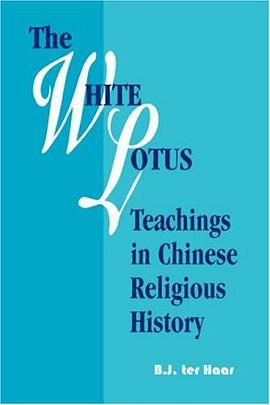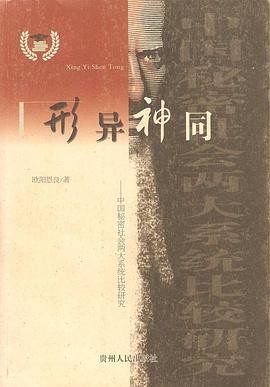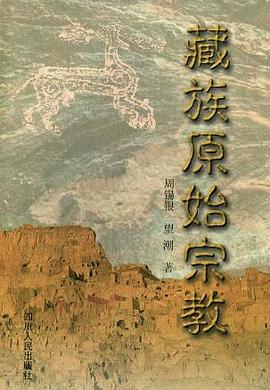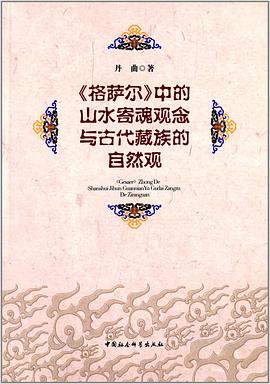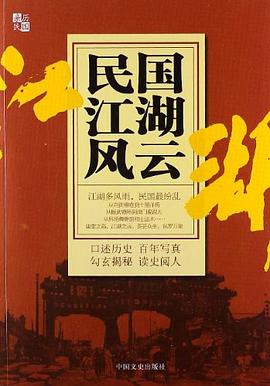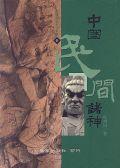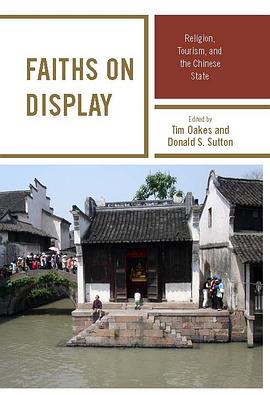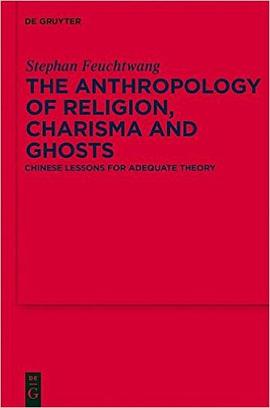
The Anthropology of Religion, Charisma and Ghosts pdf epub mobi txt 電子書 下載2025
- 王斯福
- 民間宗教
- 鬼神觀
- 範莊
- 情感
- 其他
- 人類學
- 中國民族誌
- Anthropology
- Religion
- Charisma
- Ghosts
- Ritual
- Spirituality
- Ethnography
- Cultural Anthropology
- Supernatural
- Belief Systems

具體描述
China has many religions. But rituals of local temples are none of these. They celebrate many gods and their powers to respond. Gods are invited as welcome guests by appropriate rituals of welcome and communication. Other rituals pacify ghosts and harmful powers. These rituals are rich with their own poetry, a poetry of performance, not just of contemplation. Interpreting this poetry demands revision of theories of ritual and religion. The author has spent over four decades studying Chinese ritual and religion through observation in contemporary China and Taiwan, constantly revising and rethinking theories of religion, ritual and their role in different political regimes.
著者簡介
圖書目錄
Part 1 Religion
Chapter 2 ‘Religion’ and its historical transfer into China . . . . . . . 11
‘Religion’ in Europe . . . . . . . . . . . . . . . . . . . . . . . . . . . . . . . . . . . . 11
‘Religion’ in imperial China? . . . . . . . . . . . . . . . . . . . . . . . . . . . . . 15
The return of Confucius as an -ism and the introduction of ‘religion’ as policy to China . . . . . . . . . . . . . . . . . . . . . . . . . . . . . . 19
The current situation . . . . . . . . . . . . . . . . . . . . . . . . . . . . . . . . . . . 23
Conclusion . . . . . . . . . . . . . . . . . . . . . . . . . . . . . . . . . . . . . . . . . . . 27
Chapter 3 ‘A Chinese religion exists’ . . . . . . . . . . . . . . . . . . . . . . . . 29
Freedman’s critique of Religion . . . . . . . . . . . . . . . . . . . . . . . . . . . 33
Chineseness . . . . . . . . . . . . . . . . . . . . . . . . . . . . . . . . . . . . . . . . . . . 39
From Ritual to Religion . . . . . . . . . . . . . . . . . . . . . . . . . . . . . . . . . 44
Conclusion . . . . . . . . . . . . . . . . . . . . . . . . . . . . . . . . . . . . . . . . . . . 47
Chapter 4 A theory of religious ritual as deference and communicative excess . . . . . . . . . . . . . . . . . . . . . . . . . . . . . . . . . . . 53
Leach’s and Lvi-Strauss’s theory of ritual . . . . . . . . . . . . . . . . . . . . 57
Hierarchy, a condition of religious ritual . . . . . . . . . . . . . . . . . . . . 58
Religious ritual as a liturgical sequence marked by incense . . . . . . 61
Answerability . . . . . . . . . . . . . . . . . . . . . . . . . . . . . . . . . . . . . . . . . . 68
Metaphoricity and contiguity . . . . . . . . . . . . . . . . . . . . . . . . . . . . . 69
Deference and deferral . . . . . . . . . . . . . . . . . . . . . . . . . . . . . . . . . . 71
Ritual as mediation . . . . . . . . . . . . . . . . . . . . . . . . . . . . . . . . . . . . . 73
Conclusion . . . . . . . . . . . . . . . . . . . . . . . . . . . . . . . . . . . . . . . . . . . 74
Chapter 5 The Organisation of Extravagance as Charismatic authority and Self-government . . . . . . . . . . . . . . . . . . . . . . . . . . . . 77
Divine selection . . . . . . . . . . . . . . . . . . . . . . . . . . . . . . . . . . . . . . . . 78
Extravagance as test of a kept promise . . . . . . . . . . . . . . . . . . . . . . 81
Fanzhuang . . . . . . . . . . . . . . . . . . . . . . . . . . . . . . . . . . . . . . . . . . . . 83
Cosmological sovereignty as accountable charisma . . . . . . . . . . . . . 85
Chapter 6 Charismatic self-healing: a case of spirit-writing in Taiwan under Japanese occupation . . . . . . . . . . . . . . . . . . . . . . . . . 91
Spirit writing as a defiance of colonial authority . . . . . . . . . . . . . . 93
Public emotion in China . . . . . . . . . . . . . . . . . . . . . . . . . . . . . . . . 96
Charismatic, spirit-written emotion and recognition . . . . . . . . . . . 98
Canonisation . . . . . . . . . . . . . . . . . . . . . . . . . . . . . . . . . . . . . . . . . . 99
History, memory and personae . . . . . . . . . . . . . . . . . . . . . . . . . . . . 102
Chapter 7 Charisma in China . . . . . . . . . . . . . . . . . . . . . . . . . . . . . 106
Universal and modern charisma . . . . . . . . . . . . . . . . . . . . . . . . . . . 107
Incarnation of expectation: the person of the leader and the bodies and emotions of followers . . . . . . . . . . . . . . . . . . . . . . . . . . . . . . . . 110
Scenarios of intensification and dispersal . . . . . . . . . . . . . . . . . . . . 113
Fields of potency for charismatic innovation . . . . . . . . . . . . . . . . . 116
Conclusion and further questions . . . . . . . . . . . . . . . . . . . . . . . . . . 120
Part 3 Ghosts
Chapter 8 The avenging ghost . . . . . . . . . . . . . . . . . . . . . . . . . . . . 125
The avenging ghost as paradigm of a forgotten and potentially disruptive past . . . . . . . . . . . . . . . . . . . . . . . . . . . . . . . . . . . . . . . . . 126
Mass death and individuation . . . . . . . . . . . . . . . . . . . . . . . . . . . . . 130
Bad death and good . . . . . . . . . . . . . . . . . . . . . . . . . . . . . . . . . . . . 135
Sites of bad death and volatile pasts . . . . . . . . . . . . . . . . . . . . . . . . 139
Ghost stories and history . . . . . . . . . . . . . . . . . . . . . . . . . . . . . . . . 140
A classical ghost story from the last years of absolute sovereignty in Europe: Hamlet . . . . . . . . . . . . . . . . . . . . . . . . . . . . . . . . . . . . . . . 142
Chapter 9 Between temporalities: a case study of the transmission of loss in Taiwan . . . . . . . . . . . . . . . . . . . . . . . . . . . . . . . . . . . . . . . . . 146
Temporalities . . . . . . . . . . . . . . . . . . . . . . . . . . . . . . . . . . . . . . . . . . 148
An Event in History: the Luku Incident . . . . . . . . . . . . . . . . . . . . 150
Mode 1: History and Official Commemoration . . . . . . . . . . . . . . 153
Luku victims’ participation in nationalist temporality . . . . . . . . . . 155
Mode 2: Disruption and Repair of Families . . . . . . . . . . . . . . . . . 161
Ghosts between temporalities . . . . . . . . . . . . . . . . . . . . . . . . . . . . . 164
Conclusion . . . . . . . . . . . . . . . . . . . . . . . . . . . . . . . . . . . . . . . . . . . 166
Chapter 10 Between death and life: a location of ghosts and demons 168
The pitiable undead . . . . . . . . . . . . . . . . . . . . . . . . . . . . . . . . . . . . 170
The uncanny . . . . . . . . . . . . . . . . . . . . . . . . . . . . . . . . . . . . . . . . . . 173
State law and family law: Creon’s tragedy . . . . . . . . . . . . . . . . . . . 175
Conclusion . . . . . . . . . . . . . . . . . . . . . . . . . . . . . . . . . . . . . . . . . . . 178
Chapter 11 ‘Religion’ in the government of the People’s Republic of China: policy-led redefinition and openings in political space . . . . 180
Science versus waste and superstition . . . . . . . . . . . . . . . . . . . . . . . 183
Civilisation, heritage, cultural tourism and the economy as masks for spirituality, ritual and magic . . . . . . . . . . . . . . . . . . . . . . . . . . . 185
Government-sponsored religion as an adjunct to government . . . . 189
The space between moral and governing authorities: lower levels of government and smaller temples, rural and urban . . . . . . . . . . . . . 193
The Party Secretary, Fu Xi and Christians in the ‘cradle of Chinese civilisation’ . . . . . . . . . . . . . . . . . . . . . . . . . . . . . . . . . . . . . . . . . . . . 194
Governing popular religion . . . . . . . . . . . . . . . . . . . . . . . . . . . . . . . 197
References . . . . . . . . . . . . . . . . . . . . . . . . . . . . . . . . . . . . . . . . . . . . 201
Index . . . . . . . . . . . . . . . . . . . . . . . . . . . . . . . . . . . . . . . . . . . . . . . . 211
· · · · · · (收起)
讀後感
評分
評分
評分
評分
用戶評價
基於比較颱灣和大陸的觀察經驗,重新思考瞭宗教和儀式的理論問題。
评分比起1974年Wolf那個集子裏幾篇對ghosts, gods, ancestors 的思考,Feuchtwang這本明顯格局要大很多思考深度也深很多。受Derrida的影響不要太明顯啊
评分比起1974年Wolf那個集子裏幾篇對ghosts, gods, ancestors 的思考,Feuchtwang這本明顯格局要大很多思考深度也深很多。受Derrida的影響不要太明顯啊
评分比起1974年Wolf那個集子裏幾篇對ghosts, gods, ancestors 的思考,Feuchtwang這本明顯格局要大很多思考深度也深很多。受Derrida的影響不要太明顯啊
评分比起1974年Wolf那個集子裏幾篇對ghosts, gods, ancestors 的思考,Feuchtwang這本明顯格局要大很多思考深度也深很多。受Derrida的影響不要太明顯啊
相關圖書
本站所有內容均為互聯網搜索引擎提供的公開搜索信息,本站不存儲任何數據與內容,任何內容與數據均與本站無關,如有需要請聯繫相關搜索引擎包括但不限於百度,google,bing,sogou 等
© 2025 book.quotespace.org All Rights Reserved. 小美書屋 版权所有

